Ceramics is one of the oldest and most fascinating art forms, blending creativity, history, and science into a timeless craft. Whether you’re a beginner eager to shape your first clay bowl or a seasoned artist refining glazing techniques, having the right ceramic books can make all the difference. From step-by-step tutorials to in-depth explorations of ceramic history and design, books serve as invaluable guides that inspire creativity while teaching essential techniques.
But with so many ceramic books available, it can be overwhelming to know where to start. Do you need a beginner’s guide with clear instructions, a reference manual for advanced techniques, or a book full of artistic inspiration and design ideas? The best ceramic books combine clear explanations, practical insights, and inspiring visuals to help you grow as both a learner and creator.
In this buying guide, we’ll break down what you should look for when choosing ceramic books, ensuring you pick the right ones for your level, style, and goals.
Buying Guide: How to Choose the Best Ceramic Books
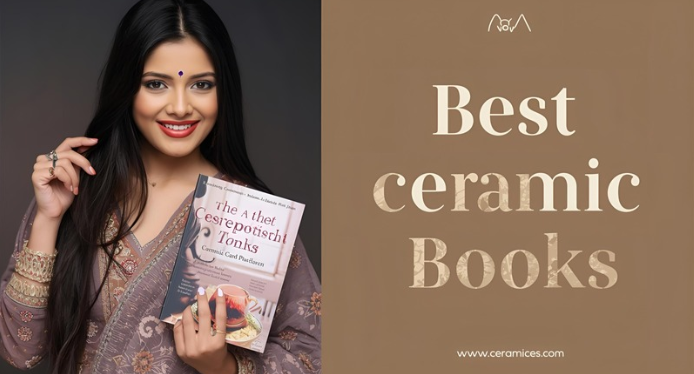
When searching for the best ceramic books, here are the key factors to consider:
1. Skill Level
- Beginners: Look for books with step-by-step tutorials, pictures, and simplified explanations.
- Intermediate: Choose guides that dive into wheel throwing, glazing, and kiln management.
- Advanced: Go for books that explore ceramic chemistry, design philosophy, and contemporary practices.
2. Type of Content
- Technique-Focused Books: Perfect for learning hand-building, wheel throwing, glazing, and firing.
- Inspiration & Design Books: Offer creative ideas, project showcases, and artist profiles.
- Reference & History Books: Provide deeper knowledge about ceramic traditions, global influences, and technical advancements.
3. Visuals & Layout
Ceramics is a visual art, so high-quality images, diagrams, and step-by-step photos make a book far more valuable. Choose books that show processes clearly, not just written explanations.
4. Author Expertise
Look for books written by experienced ceramic artists, teachers, or industry experts. Their insights and personal tips can save you from common mistakes.
5. Practicality & Depth
Some books are quick guides with projects, while others are deep-dive manuals you’ll keep referring back to. Consider whether you need a handy beginner’s workbook or a comprehensive ceramic encyclopedia.
6. Reviews & Recommendations
Before buying, check what other readers and ceramic enthusiasts say. Books with consistent praise for clarity, detail, and inspiration are usually worth adding to your collection.
✨ With the right ceramic book, you’ll not only improve your technical skills but also fuel your artistic imagination, making your ceramic journey more enjoyable and rewarding.
1. Amazing Glaze: Techniques, Recipes, Finishing, and Firing by Gabriel Kline
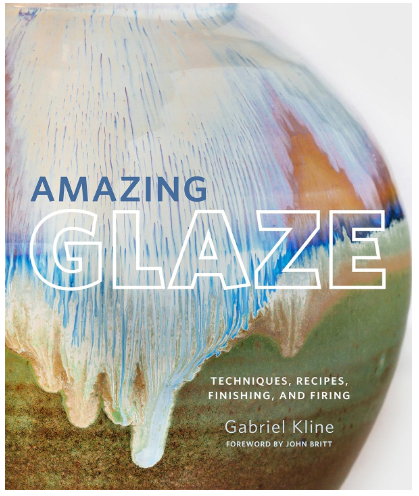
Description:
This book is part of the Mastering Ceramics series and is one of the go-to resources for understanding ceramic glazes in depth. Gabriel Kline breaks down glaze chemistry, recipes, and finishing methods in a way that’s accessible for both intermediate and advanced potters. She also includes inspiration and practical advice for finishing pieces beautifully after firing. Very visual, with many photo examples and test tiles.
Key Features:
- Over 150 glaze recipes for low-fire, mid-fire, and high-fire applications.
- Detailed guidance on formulating, mixing, and adjusting glazes.
- Troubleshooting section: common glaze issues (crazing, pinholes, blistering) and how to fix them.
- Clear photography and test tiles to illustrate color and texture results.
- Instructions for finishing and presentation (e.g., polishing, sanding, buffing).
Pros:
- Very well organized; you can look up problems or styles and find relevant recipes.
- Offers enough depth to move beyond copying recipes — you’ll learn why glazes behave the way they do.
- Beautiful visual layout helps anticipate what your own pieces might look like.
Cons:
- Not ideal for absolute beginners; some glaze chemistry and kiln terms assume prior knowledge.
- Recipes may require specialized materials that are harder to source in some regions.
- Because of the testing images, there’s a lot of content; for someone wanting just quick “what to buy” or “basic glazes,” might feel dense.
Recommendation:
If you already know your way around clay and are serious about glazing — wanting to experiment and adjust glazes — this book is outstanding. It’s especially useful if you have access to a good studio and supply of glaze materials, and are willing to test. For someone just starting with low-fire or dabbling at home, it might be overkill, but definitely something to aspire to.
2. The Ceramic Glaze Handbook: Materials, Techniques, Formulas, Tools by Mark Burleson
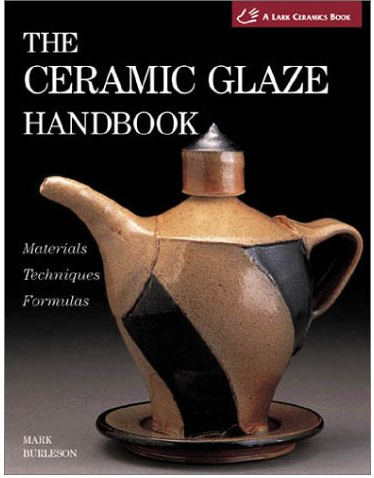
Description:
A classic reference, this handbook is more technical than inspirational. It serves as a solid manual for materials, proportions, and the “why” behind glaze behaviors. It walks through everything from the raw ingredients to final appearance and durability, with formulas and tips for achieving consistency.
Key Features:
- Extensive discussion of glaze components: fluxes, silica, alumina, colorants.
- Many graspable formulas (with parts by weight) to mix your own glazes.
- Comparative test strips showing different firing atmospheres and how they change outcomes.
- Practical tools and troubleshooting included.
Pros:
- Solid, reliable technical detail — great for studio potters who want consistency.
- Good resource if you want to adjust or compose glazes rather than just follow recipes.
- Offers insight into safety and materials handling.
Cons:
- Less visually lush — more utilitarian, so if you want lots of inspiring photography, this is lighter in that area.
- Some older material may have products or materials less common today; needs adaptation.
- Might feel dry in places for those looking more for art/design than chemistry.
Recommendation:
Excellent as a reference book. Especially helpful if you plan to make your own glazes, test frequently, or run a small studio. Even advanced hobbyists will keep coming back to this, particularly for its technical clarity.
3. The Potter’s Studio Clay & Glaze Handbook by Jeff Zamek
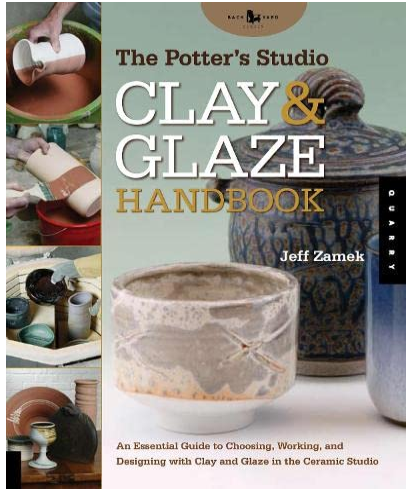
Description:
This book bridges clay body behavior with glaze finishing. Jeff Zamek covers clay preparation, glaze application, kiln firing, and final effects. It’s nicely balanced — offering both practical building and decorative ideas plus technical details, illustrated with photos and diagrams.
Key Features:
- Sections on clay bodies: how they behave, how to prepare them, how to test shrinkage and porosity.
- Glaze application techniques (dipping, brushing, spraying) and how each affects finish.
- Detailed guidance on kiln strategies: loading, firing schedules, tweaks for oxidation vs. reduction.
- Examples of finished work with notes on what the maker did differently.
Pros:
- Very usable for intermediate potters who want to refine their results.
- Helps connect how clay + glaze + firing interact rather than treating glaze as an isolated topic.
- Good balance of art, technique, and problem solving.
Cons:
- Less suited to someone who isn’t even comfortable throwing or molding clay yet. Some assumptions are made.
- Fewer “inspiration-only” galleries; more focused on what works in practice.
- Material sourcing or kiln setups discussed sometimes assume access to a well-equipped studio.
Recommendation:
If your interest is making pieces that look not just “okay” but well-finished and polished, this is a great buy. It’s also very useful for studio potters wanting to improve their technical control over the whole ceramic process (not just glaze).
4. Mastering Hand Building: Techniques, Tips, and Tricks for Slabs, Coils, and More by Sunshine Cobb
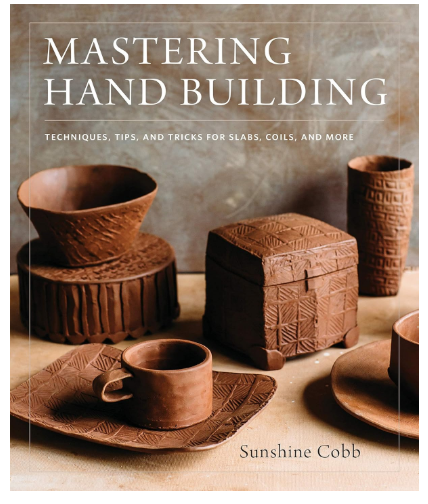
Description:
Unlike many books that focus heavily on wheel throwing, this one is devoted to hand-building techniques — slabs, coils, pinching, and creative variations. It’s beautifully illustrated, with plenty of project ideas. Great for those who prefer working without a wheel or want to expand their repertoire.
Key Features:
- Step-by-step instructions for building using slab, coil, pinch, etc.
- Projects that scale in complexity, from basic forms to more intricate ones.
- Surface decoration ideas integrated into hand-building (texturing, embellishments, carving).
- Templates and tips for planning your forms and maintaining consistency.
Pros:
- Inspiring and accessible for people who don’t have a pottery wheel.
- Great visuals; projects that make sense and often use tools found in many households.
- Encourages experimentation and creativity outside of standard thrown shapes.
Cons:
- Because it’s not about glazing chemicals or firing schedules, you’ll still need other references for that part.
- Less useful for someone focused solely on wheel throwing or big kilns.
- Some projects need more space or supplies, so cost of materials can add up.
Recommendation:
Perfect for hobbyists, beginners, or makers working from small studios or homes without wheels. A lovely book to expand what you can do with clay by hand, especially useful for craft fairs, gifts, or home decor.
5. The Art of Low-Fire Glazes: Techniques, Color Development, and Surface Design for Functional and Sculptural Ceramics
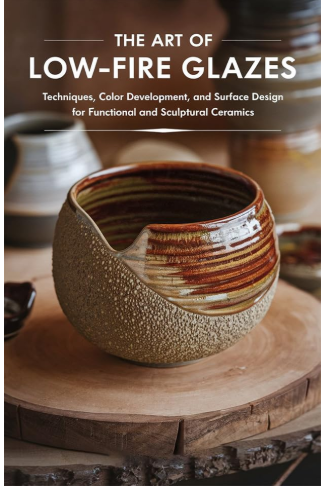
Description:
Low-fire glazes offer vibrant color, interesting textures, and lower energy costs. This book focuses on cone 06–04 glazes (lower fire), explaining color development, surface textures, types of glazes, and design strategies suited to functional and sculptural work.
Key Features:
- Detailed discussions of color theory as applied in low-fire ceramics.
- Surface design explorations (drips, gloss vs matte, reactive glazes).
- Recipes and guidance specifically for low-fire glazes (what materials to use, how to adapt).
- Ideas for functional ware (plates, bowls) as well as sculptural pieces.
Pros:
- Very good for artists who want vibrant color effects and want to do more with fewer firings.
- Easier access for many hobbyists because low-fire kilns and materials tend to be more affordable.
- Great visual outcome; beautiful photography helps set expectations.
Cons:
- Low-fire glazes tend to be less durable long-term than higher fired ones (e.g. for pots that see a lot of wear or frequent dishwashing). So this book is less helpful if your goal is highly durable cookware-type items.
- Some materials suggested may be less accessible in certain regions.
- Fewer details on higher-fire glazes or alternatives; you’ll need other books to round out your understanding.
Recommendation:
If you’re getting started with glazes and want dramatic color and effects with lower costs (less energy, simpler kiln work), this book is excellent. Also great if you produce smaller pieces or decorative items where extreme durability isn’t always essential.
6. Ceramic Glazes: The Complete Handbook by Brian & Christine Taylor
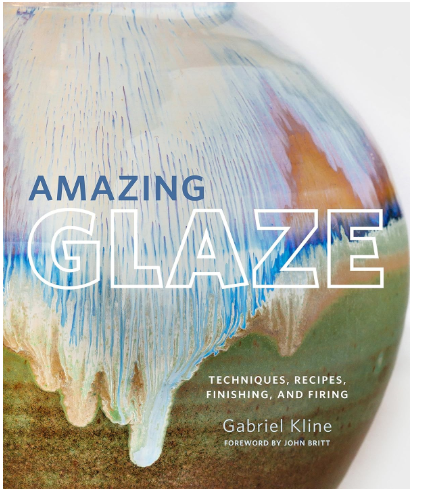
Description:
A broad and lushly illustrated handbook covering glaze materials, mixing, application, testing, and aesthetic effects. This one’s strong in showing real-life examples of finished glazes and how small changes in ingredients or firing affect outcome.
Key Features:
- Comprehensive coverage of different glaze types (gloss, matte, crystalline etc.).
- Before-and-after photos of glazes under different conditions.
- Information on raw material sourcing, material compatibility, and safety.
- Helpful user tips for consistency and avoiding common problems.
Pros:
- Gorgeous photos; good for inspiration as well as technical understanding.
- Very practical: you can see what small tweaks do to color, texture, sheen.
- Useful for both hobbyists and more serious studio potters.
Cons:
- Because of its breadth, not every topic is deeply exhaustive (e.g. top-tier crystalline glazes get less detail than in more specialized books).
- Some recipes presume knowledge of firing techniques or kiln behavior.
- Can be intimidating if you’ve never mixed glazes or worked much with raw materials.
Recommendation:
If you want a single, well-illustrated book that gives you both beautiful examples and solid technique, this is an excellent choice. Great for people expanding their glaze knowledge and wanting to experiment visually while also learning fundamentals.
Perfect 👍 Since we’re talking about ceramic books, the “how to use it” and “safety guide” section will focus on how readers can best use these books for learning ceramics and also practice safe techniques when applying what they learn (since ceramics involves tools, kilns, and materials that need caution).
How to Use Ceramic Books Effectively
- Start with the Right Level
- If you’re a beginner, pick books with clear instructions and lots of step-by-step images.
- Intermediate/advanced readers should use technical glaze handbooks and reference guides alongside project-based books.
- Follow Along with Projects
- Don’t just read—practice! Books often include projects that build progressively on skills. Work on them in order rather than skipping ahead.
- Use Books as Reference Manuals
- Keep glaze handbooks and technical guides in your studio. When troubleshooting issues like cracking, blistering, or uneven glazing, flip back to the relevant section.
- Combine Books with Practice
- Reading teaches concepts, but ceramics is hands-on. Use the books for technique inspiration, then practice at the wheel, hand-build with clay, or test glazes in small batches.
- Make Notes and Create Test Tiles
- When following glaze recipes, make test tiles and label them. Note what worked and what didn’t, using your books as a logbook for adjustments.
Safety Guide for Learning from Ceramic Books
Ceramics is fun and rewarding, but it involves materials, tools, and heat that can be hazardous if not handled properly. When using ceramic books as your guide, keep these safety tips in mind:
1. Material Handling
- Many books will introduce raw glaze materials (silica, oxides, carbonates). Always:
- Wear a dust mask/respirator when handling powders.
- Work in a well-ventilated area.
- Avoid eating or drinking near materials to prevent contamination.
2. Tool Safety
- Use cutting tools, carving tools, and sharp instruments carefully, following book instructions.
- Always cut away from your body when trimming clay or slabs.
3. Kiln Safety
- Books on glazing and firing often include kiln use. Remember:
- Only fire a kiln in a properly ventilated space.
- Never touch a hot kiln without heat-resistant gloves.
- Follow manufacturer’s firing schedules, not just book suggestions.
4. Glaze Testing Safety
- When experimenting with glaze recipes from books:
- Mix small test batches first.
- Clearly label all glaze jars.
- Keep glazes with food-safe ingredients separate from decorative-only glazes.
5. Workspace Organization
- Books will often encourage creativity, but safety comes first:
- Keep tools clean and put away when not in use.
- Mop or wet-wipe surfaces (never sweep dry clay dust—it contains silica that’s harmful to lungs).
6. Personal Protection
- Wear an apron or old clothes (ceramic work is messy).
- Protect your eyes when grinding, sanding, or spraying glazes.
- Use gloves when handling potentially irritating chemicals.
✨ By combining the knowledge from ceramic books with safe studio practices, you’ll get the most from your learning while protecting your health and workspace. Books give you the roadmap, but it’s your careful and mindful practice that ensures success.
❓ Frequently Asked Questions (FAQs)
1. Are ceramic books useful for complete beginners?
Yes. Many ceramic books are designed specifically for beginners, with step-by-step instructions, photos, and simple projects. They’re a great way to learn before taking a class or investing in expensive tools.
2. Do ceramic books cover glazing and firing, or just clay shaping?
It depends on the book. Some focus on hand-building and wheel-throwing techniques, while others dive into glazing, chemistry, and firing processes. The best approach is to pick a mix that matches your learning goals.
3. Can I learn ceramics only from books, without classes?
Books can teach you a lot of fundamentals and inspire creativity. However, ceramics is very hands-on, so combining books with practice — or even short workshops — is the most effective way to learn.
4. What’s the difference between ceramic technique books and ceramic art books?
- Technique books teach you skills like hand-building, wheel throwing, and glazing.
- Art and design books inspire creativity, showcase artists’ works, and explore ceramic traditions. Both are valuable in different ways.
5. Are the glaze recipes in ceramic books safe for food use?
Not always. Some glaze recipes are decorative-only and not food-safe. Always read carefully — authors usually note whether a glaze is suitable for functional ware.
6. Which is better: a beginner-friendly project book or a detailed reference handbook?
It depends on your level:
- Beginners benefit most from project books.
- Intermediate to advanced learners should add reference handbooks for deeper knowledge.
🔚 Conclusion
Ceramic books are more than just guides — they are mentors in print form. Whether you’re shaping your first clay mug, experimenting with glaze chemistry, or studying the history of ceramics, the right book can unlock skills and inspire creativity.
The best ceramic books combine clear instructions, expert insights, and inspiring visuals. Beginners should focus on project-based guides with step-by-step tutorials, while more advanced potters can benefit from technical glaze handbooks and reference materials. Choosing books written by experienced ceramicists ensures that you get reliable, practical knowledge to guide your journey.
In short, if you want to master ceramics — whether as a hobby or profession — investing in the best ceramic books is one of the smartest steps you can take. They’ll not only help you learn techniques but also fuel your imagination, making every piece you create uniquely your own.